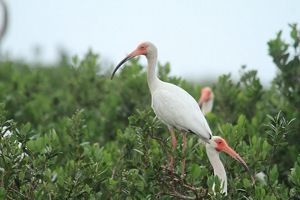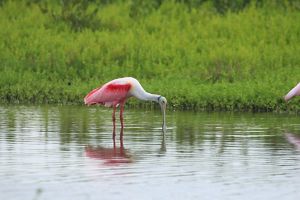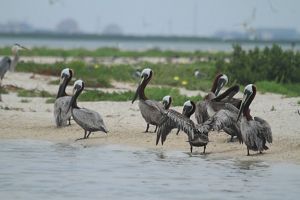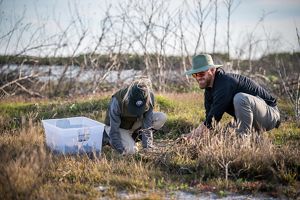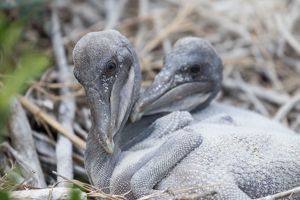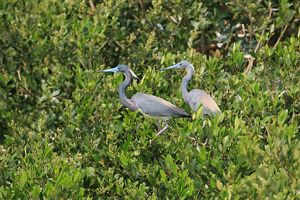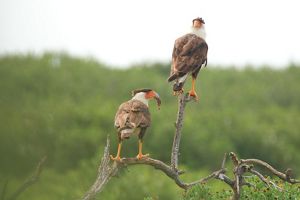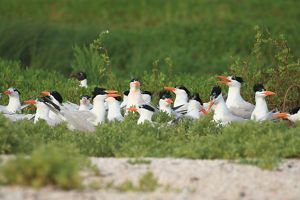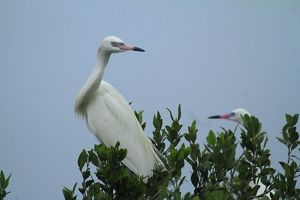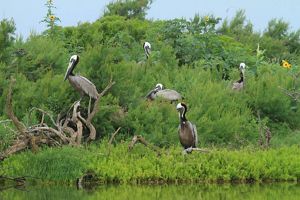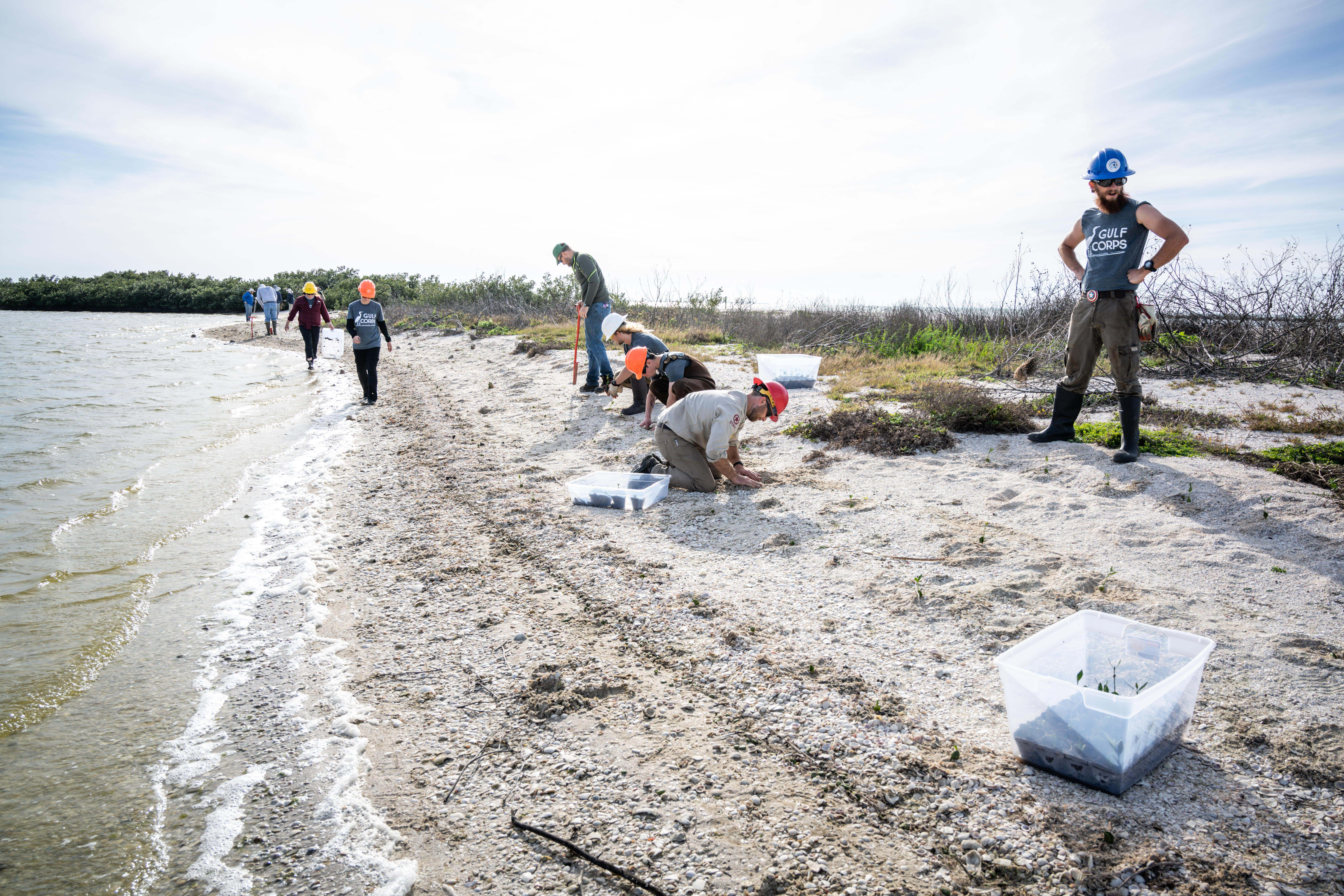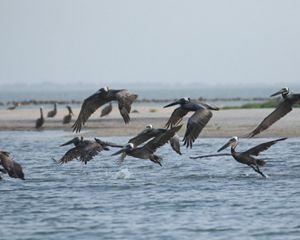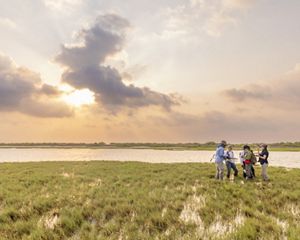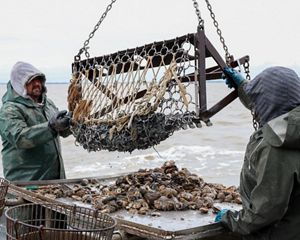Description
On the eastern shore of Corpus Christi Bay lies one of the most important colonial bird-nesting islands on the Texas Gulf Coast. The island was once an extensive peninsula of Mustang Island, but, in the 1950s, a series of navigational channels were dug into the landmass for oil and gas exploration, significantly weakening it. In early August of 1970, Hurricane Celia's path of destruction completely separated the peninsula into an island, creating a prime rookery nearly free of human disturbance and predatory wildlife. Today, it remains one of the most productive waterbird nesting islands on the Texas coast. Nineteen waterbird species now nest on The Nature Conservancy's (TNC) 110-acre Shamrock Island Preserve each year, some of which have thousands of nesting pairs.
Grasses and shrubs help stabilize Shamrock Island's uplands, while marsh plants occupy areas frequently inundated with high tides. Offshore, seagrass meadows help reduce wave energy and provide essential forage for redhead ducks as well as nursery, feeding and refuge areas for many estuarine fish and invertebrates. On land, resident and migratory species depend on the preserve’s plant communities for nesting sites, food and shelter. Notable plant species of conservation interest include seaside little bluestem, gulfdune crowngrass, sea oats, shoal grass and Texas stonecrop.


